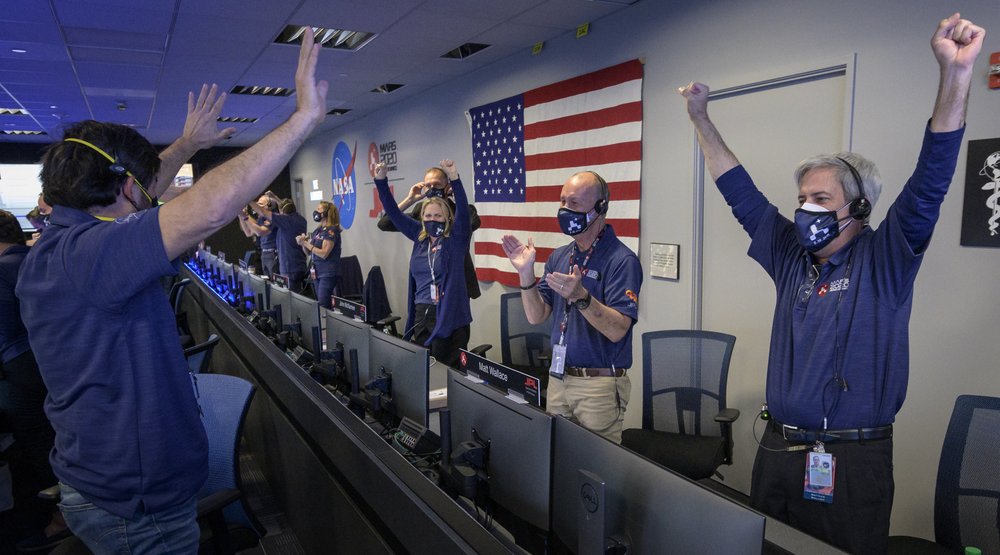
NASA successfully landed its Perseverance rover on the surface of Mars on Feb. 18 after a 203-day journey.
The successful landing was confirmed in mission control at NASA’s Jet Propulsion Laboratory in Pasadena, California at 3:55 p.m. EST. The rover is equipped with the most cameras ever sent to space along with caching systems that are the first of its kind.
BYU professors from various areas of study who research planetary science weighed in on the significance of NASA’s achievements with Perseverance on Mars.
To BYU geological sciences professor Jani Radebaugh, projects like the Perseverance Mars rover allow for greater exploration of the planets. Radebaugh is currently working on a NASA’s Dragonfly rotorcraft mission to Titan, Saturn’s largest moon, and also studies the Earth’s surface with BYU undergraduate and graduate students in order to more fully comprehend planetary surfaces.
“We’re really starting this new era of planetary surface exploration. I think it’s really important to go out and look at the Earth and what we understand about materials and landscapes and processes on Earth. We then can easily apply those findings to other planets outside of Earth,” Radebaugh said.
Over the next decade, the rover will expand on the knowledge scientists have of space through high quality footage and important physical samples from the surface of Mars.
Shiuh-hua Wood Chiang, a BYU electrical and computer engineering professor, is also involved in planetary research, specifically on the nature of Martian dust and how rotorcrafts such as Perseverance can withstand the natural occurrences of planets.
“It’s a great thing to happen for human society to be able to expand our reach to other planets, ” Chiang said. “And long term, hopefully, the human race will be able to expand beyond Earth to live on Mars.”
NASA has said that one of the purposes of Perseverance is to pave the way for human missions to Mars.
Byron Adams, a BYU biology professor and planetary scientist, said projects such as Perseverance can have a huge impact on not only science and the next generation of scientists, but also on society as a whole.
“It’s opening our eyes to different ways of exploring,” Adams said. “We’re exploring, we’re pushing boundaries, we’re seeking. It’s one of the most hopeful things that humans do.”
NASA scientists plan on investigating the surface of Mars with Perseverance in order to search for signs of ancient microbial life.
The landing of Perseverance is “one of those pivotal moments for NASA, the United States, and space exploration globally,” acting NASA Administrator Steve Jurczyk said in a press release.
In just the first few weeks since touchdown, the rover has recorded audio footage of the surface of Mars, footage of its landing, and first-of-its-kind high-definition panoramic images.




